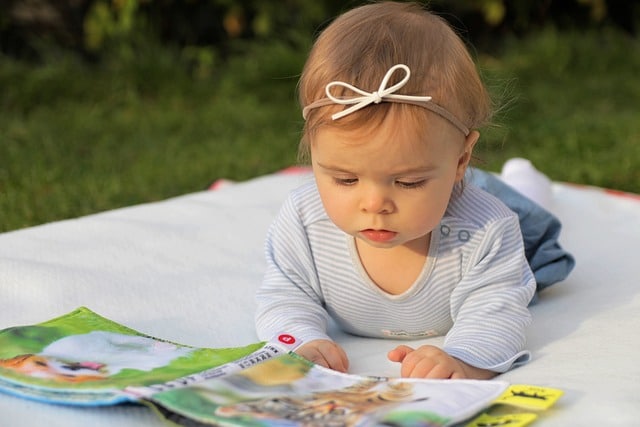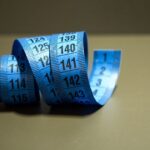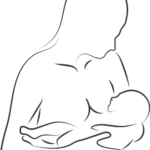Image credit to APKPure
10 Things You Need For the size these humans are, babies sure do need a lot of stuff. It’s like they come with an updated subscription to Amazon, filled with things they need—like diapers, bottles, pacifiers, bibs, burp cloths, and teethers.
Very true, during those first few weeks after birth, when they can go through several outfits in one day and douse them in pee, poop, spit-up, or whatever they please, and feed end-to-end, all day and all night, upon request.
And what about Mom, what does she need? Although the list of such items that can make a mom’s life easier right after delivery is a little shorter than that for the baby, there are still several things that can make those initial post-birth days a bit more comfortable.
Everything — literally — may hurt after you deliver a baby, and the first weeks of life with a newborn are rough on their own. Hopefully, these basics will make it all a bit easier, reduce the pain, and have you feeling like yourself soon. Even essential comfort items like Tylenol, maxi pads, and maybe some anesthetic for vaginal use will do you wonders.
Whether a first-time mom or a new mom, here’s what you need to live your best postpartum life, when you need it, and how much to buy.
Large Pads
When needed: In the hospital and at home.
How much needed: The hospital will keep you with enough while you are there, but you should have at least one or two packages to start with at home, too.
Why: The good news is you’re done with pregnancy! The bad news is you’re about to have the longest and heaviest period of your life as you experience postpartum bleeding. For six to eight weeks you will be passing something called lochia, which is a mix of blood, tissue, mucus, and fluid from your uterus.
This one will start super heavy in the beginning, level off for a bit, and then become more like spotting before it finally stops. You are going to want to bring out the big dogs with this one. Use the most maxi kind of maxi pads you can find—thick and long and full coverage.
Disposable Underwear/Liners
When you’ll need them: In the hospital and for several days at home.
How much do you need You get some free ones at the hospital, either one or two pairs, but inexpensive disposable models range from one dollar to four or five dollars each if you want to just get a bunch.
Why: mesh underwear will be your salvation post-birth and stretch amazingly to fit giant maxi pads—and all of your postpartum bits—without issue. It’s disposable but very comfortable and holds you without digging into your skin, or compressing, constricting, or squishing your tender abdomen or sensitive areas in any way.
The hospital will give you a few pairs to use while there, but if you find you may want to extend your habit of wearing mesh underwear for more than those first couple of days, you might just want to buy a pack for yourself.
OTC Pain Relievers
How much you’ll need: As many doses as you need to get through the first 5 to 7 days postpartum. Yes, that’s right—the hospital will supply it during your stay but you should have your own cache.
Why: If you give birth in the hospital, extra-strength ibuprofen is a standard part of your after-care package, whether you had a c-section or vaginal delivery. You can keep it up at home, or switch to acetaminophen if you prefer. It’ll also help take the edge off postpartum cramps, which can occur as your uterus starts to contract back down to its pre-pregnancy size.
Perineal Numbing Spray
When you need it: First 5 to 7 days postpartum.
How much you want: The hospital might or might not give you some, so at least pack one bottle in your delivery bag and one for at home.
Why: If you have a c-section, you can ignore this one, but if you have a vaginal delivery — especially if there’s any tearing — you’ll want a topical anesthetic that can be sprayed directly on it for some sweet, sweet postpartum relief. Your pelvis has just undergone something of a traumatic event, at the least—it’s going to take a while to heal. In the meantime, it’s going to hurt. The numbing spray will help.
Postpartum Perineal Squeeze Bottle
When you need it: For the first 5 to 7 days postpartum.
How much you need: You might get a peri bottle to take home from the hospital, but you only need one, anyhow.
This is an item? For your needs, completely indispensable. Do not take for granted this little plastic squeeze bottle until after you have given birth. Filled with warm water, it’s going to make the whole peeing postpartum process so much more comfortable.
Not only can your perineal area be sore after birth, but it can also dry out and crust over with lochia. That can make urinating. well, not exactly a good time. A perineal squeeze bottle can help, though. Before and after urinating, squirt a little stream of water all over your perineal area to soften, hydrate, and cleanse it.
Also Read : Baby To Sleep in a Pack and Play?
Stool Softener
How much you need: Enough to take 1 to 3 capsules per day until you’re having regular bowel movements again.
Why: You might believe that your work is done once your baby arrives, but if you haven’t had that one yet, you are not in the clear. Most women find themselves constipated after birth, not to mention pretty scared of having to do any pushing or straining so soon after delivery.
Now that probably would be the easiest way to make this less of an ordeal, starting to prime the bowels for movement right after you give birth. Stool softeners don’t force you to go, rather facilitate an easier way to pass whatever is born inside; they work best for preventing constipation.
In other words, start taking the softeners before you become constipated, and hopefully, your first postpartum bowel movement will not be as difficult as labor.
Also Read : Baby To Sleep in a Pack and Play?
Nursing Pads
When you need it: At home
How much you need: Few pairs of washable pads or a box of disposables.
Why: If you’re going to nurse or pump exclusively, your milk will come in around 48 to 72 hours post-birth—and there will be leakage before and in between feedings.
Unless you are going to want to change your clothes twice as often as you will be anyway (thanks, diaper blowouts!), you’re going to want to buy these absorbent pads you can place inside your nursing bra to act as a barrier. You can use cotton, washable pads, or soft disposable ones.
When you need it: Nursing bras always are a good idea to bring to the hospital with you, especially for the ride home.
Nursing Bras or Tops
How many you need: As many as you’ll need between loads of laundry. Why: You’ll need a couple of these (or will need to know where to borrow some)—and probably a few nursing-friendly tops as well. These don’t have to be specially-designed nursing tanks or shirts—button-up shirts or cardigans, pullovers with zippers, or sweaters with deep v-necks work fine in a pinch—though nursing camisoles (that simply fasten or unfasten from the straps) are well worth it.
Whatever you decide, make sure you have plenty, so you can rotate them through washings and all those quick changes of clothes when the baby spits up all over you.
Nipple Cream
When you need it: At home.
How much you need: At least one tube.
Why: Nursing moms and exclusively pumping moms are both going to wind up with pretty sore nipples. Until your nipples have adapted to breastfeeding, they’re probably going to be rubbed raw, and it’s possible they’ll crack, too.
Nipple cream, particularly of the kind with lanolin, will literally save your boob from becoming a painful, cracked, sore mess. Lanolin doesn’t just cushion your nipples to prevent further damage, but it goes a really long way in offering some relief for irritated ones.
Witch Hazel Pads
Fill a new basket/bin on a chest of drawers or shelf, as needed for replenishment.
Why: Witch hazel is one of those magical things that you slather on your face to fend off acne, your bum to soothe hemorrhoids, and your vagina in effort to ease the flaming ache left behind after delivery. And with postpartum hormones, you may just need it for all three reasons!
Witch hazel works as a great anti-swelling and anti-inflammatory agent. For hemorrhoids, gently applying a few times daily, especially after bowel movements, results in great relief. You could even stack a couple of witch hazel pads together in cases of vaginal pain, just changing them out after drying over your maxi pad.
Tip: Keep your witch hazel pads in your fridge. That one, you owe us.










